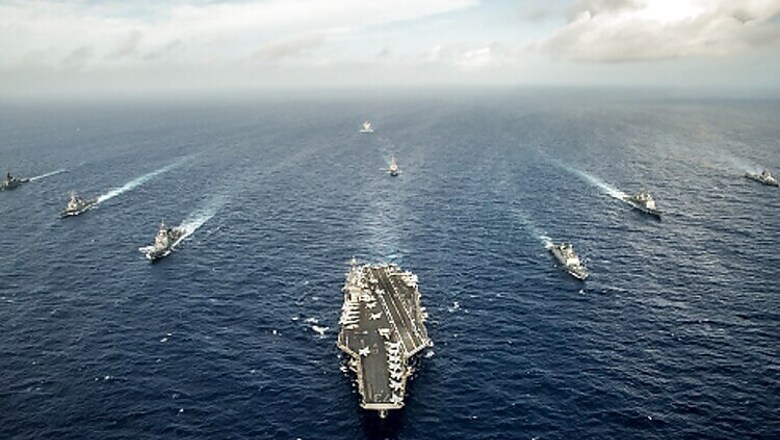
views
World military expenditure has once shown an upward trend in 2015, according to the data released by Stockholm International Peace Research Institute (SIPRI). As expected the United States of America is still the world’s biggest spender, despite its expenditure falling by 2.4% to $596 billion.
Among the other top spenders, China took the second spot with its expenditure rising by 7.4% to $215 billion, Saudi Arabia’s grew by 5.7% to $87.2 billion, and Russia’s increased by 7.5% to $66.4 billion.
The United Kingdom is at number 5 with a spending of $55.5 billion while India, which is flanked by two major adversaries in Pakistan and China, spent $51.3 billion to take the sixth spot. The other countries in the top 10 are France, Japan, Germany and South Korea.
The figures reveal that the world spent $1.7 trillion on buying weapons platforms in 2015, an increase of 1% in real terms from 2014.
It is also the first increase in military spending since 2011 and is chiefly due to continuing growth in Asia and Oceania, Central and Eastern Europe, and some Western Asian countries. Even the western world, which was showing a decline in spending in the last few years, is slowing down on cutting defence budgets.
But countries in Africa, Latin America and the Caribbean continue to cut down on military expenditure.
An interesting find is that falling oil prices have signalled cuts in military expenditure. The SIPRI report says high oil prices along with new oil discoveries and exploitation contributed to a surge in military spending in many countries around the world in the past decade. However, the crash in oil prices that started in 2014 has begun to reverse this trend in many oil revenue-dependent countries.
Highlights of military spending:
Military spending in Asia and Oceania rose by 5.4% in 2015 and was heavily influenced by China. Heightening tensions between China and various countries in the region contributed to substantial increases in expenditure by Indonesia, the Philippines and Vietnam, and triggered the start of a reversal of the long-term downward trend in Japan’s military spending.
Data for several West Asian countries is unavailable. For those countries for which data is available, spending increased by 4.1% in 2015. Iraq’s military expenditure rose by 536% between 2006 and 2015—the largest increase by any country in the world during that period.
Military expenditure in Latin America and the Caribbean decreased by 2.9%. It is largely explained by the huge fall in spending in Venezuela. Brazil’s military expenditure also declined slightly as a result of its economic crisis. Spending continued to increase in Central America due to the growing militarization of the anti-drug war.
Military expenditure in Africa fell by 5.3%, following 11 years of continuously rising spending. This was mainly due to the large cut by Angola, the largest spender in sub-Saharan Africa, in the wake of the sharp fall in oil prices.
Decline in Western military spending coming to an end?
Military spending in North America and Western and Central Europe has been decreasing since 2009, largely as a result of the global economic crisis, as well as the withdrawal of most US and allied troops from Afghanistan and Iraq. There were signs in 2015, however, that this decline was coming to an end.
US military spending was down by 2.4% in 2015, a much slower rate of decline than in recent years. This was the result of measures passed by the US Congress to partially protect military spending from previously agreed budget deficit-reduction measures. US military spending is projected to remain roughly level in real terms in 2016.
Taken together, spending in Western and Central Europe was down by just 0.2% in 2015. However, in Central Europe alone spending was up 13%. There were particularly large increases in countries bordering Russia and Ukraine — namely Estonia, Latvia, Lithuania, Poland, Romania and Slovakia — which are those most concerned about Russia’s intentions following the crisis in Ukraine.
In contrast, Western European expenditure was down 1.3% but this was the lowest rate of annual decline since the start of the recent fall in spending, which began in 2010. The United Kingdom, France and Germany have all announced plans for modest spending increases in the coming years sparked by concerns about Russia and the threat posed by the Islamic State.
"Military spending in 2015 presents contrasting trends," says Dr Sam Perlo-Freeman, head of SIPRI’s military expenditure project. "On the one hand, spending trends reflect the escalating conflict and tension in many parts of the world; on the other hand, they show a clear break from the oil-fuelled surge in military spending of the past decade. This volatile economic and political situation creates an uncertain picture for the years to come."




















Comments
0 comment